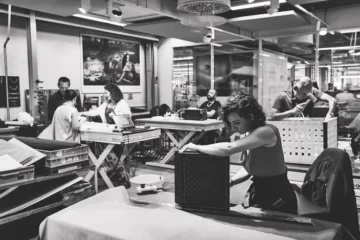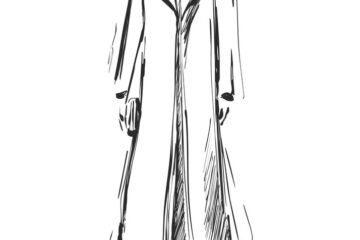Introduction:
While formal education undoubtedly provides a solid foundation for aspiring fashion designers, the realm of fashion has also seen the rise of self-taught visionaries who defied conventional paths. These designers, driven by passion, innovation, and sheer determination, have left an indelible mark on the industry. In this blog, we’ll explore the inspiring stories of some of the biggest self-taught fashion designers, highlighting how their unorthodox journeys aided their creativity instead of hindering it.
### A Journey of Self-Discovery:
1. **Coco Chanel**: One of the most legendary names in fashion, Coco Chanel’s journey began as a seamstress and cabaret singer. With no formal training, she revolutionized women’s fashion by embracing simplicity, comfort, and elegance. Chanel’s lack of formal education allowed her to think beyond existing norms, liberating women from restrictive clothing and laying the foundation for modern minimalism.
2. **Ralph Lauren**: Before becoming a global fashion mogul, Ralph Lauren started as a tie salesman. With a keen eye for style and a strong personal aesthetic, Lauren created his iconic brand from scratch. His self-taught approach enabled him to infuse his designs with a distinct blend of Americana and luxury, catering to a wide audience.
### Breaking Boundaries:
3. **Alexander McQueen**: Known for his avant-garde creations, Alexander McQueen began his career as a tailor’s apprentice. His fierce determination and innate creativity led him to design some of the most awe-inspiring and controversial collections in fashion history. McQueen’s unstructured path allowed him to experiment fearlessly, pushing the boundaries of art and fashion.
4. **Vivienne Westwood**: An icon of punk and rebellious fashion, Vivienne Westwood started selling clothes with her partner Malcolm McLaren in their London boutique. Her self-taught approach allowed her to challenge societal norms and redefine fashion’s relationship with music, culture, and politics.
### Nurturing Individuality:
5. **Azzedine Alaïa**: A master of craftsmanship and fit, Azzedine Alaïa honed his skills through personal experimentation and a deep understanding of the human form. Without formal training, Alaïa developed an intimate relationship with fabrics, sculpting them to accentuate the body’s natural beauty. His self-taught expertise fostered a distinctive and timeless style.
6. **Thierry Mugler**: A self-proclaimed outsider, Thierry Mugler’s fascination with fantasy and theatrics led him to a unique path in fashion. His background in ballet and theater, combined with his innate design sensibility, allowed him to create otherworldly garments that defied conventions and embraced the extraordinary.
### Unleashing Unconventional Visions:
7. **Jean-Paul Gaultier**: Hailing from a humble background, Jean-Paul Gaultier developed his extraordinary design skills through experimentation and innate talent. His unconventional inspirations, from street style to punk, challenged the establishment and brought an edgy and provocative aesthetic to high fashion.
8. **Rick Owens**: A master of dark and minimalist aesthetics, Rick Owens is self-taught in both design and pattern-making. His unconventional approach allowed him to create a distinctive brand that celebrates individualism, pushing the boundaries of form and silhouette.
### Conclusion: A Lesson in Creative Freedom
The stories of these self-taught fashion designers illuminate the power of unbridled creativity and unorthodox learning journeys. Their lack of formal education enabled them to see fashion through a different lens, breaking free from established norms and paving the way for innovation. By embracing their unique perspectives, these designers transformed their unconventional paths into an asset, ultimately enriching the world of fashion with their individuality and trailblazing spirit. Their journeys stand as a testament to the boundless possibilities that await those who dare to forge their own paths in the world of design.





